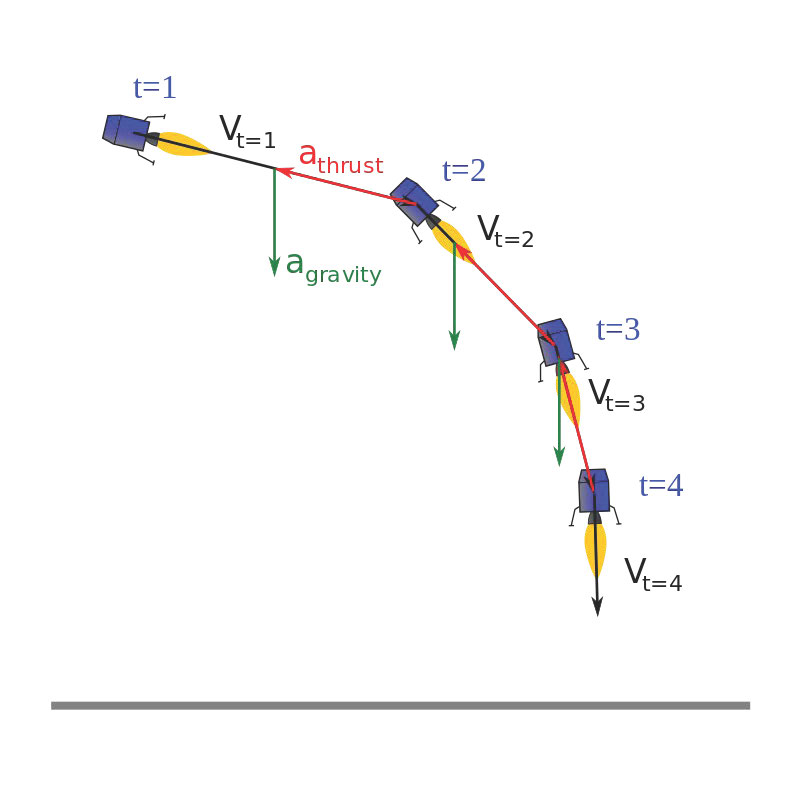
Q: Rocket Propulsion – SpaceX
I am a first-year Aerospace Engineering student. So, I am very
interested in rocket propulsion systems. In SpaceX’s most recent launch (3rd) of their Starship rocket, what allows for Starship to not rip apart when gliding down to land back down? I am mostly confused about the stabilization and the engineering that has to do with orienting the rocket to create the most drag on its downward descent.
A: I am not expert on this topic:) I would just try to explain the Descent and Landing procedure from the perspective of physics. See the attached picture (from Wiki). The acceleration due to gravity a_g is nearly constant in both magnitude and direction, while the acceleration due to thrust a_t is nearly constant in magnitude, but varying in direction. To understand the process, decompose a_t into horizontal and vertical components. At instant 1, the horizontal component of velocity of rocket is still high, so the horizontal component of a_t is also big to slow it down. Then to instant 2, 3, and eventually at 4, the horizontal component of velocity of rocket decreases to zero. The horizontal component of a_t also gets zero, and a_t is completely upward in vertical to slow down rocket against a_g. Finally, the rocket will land on the surface with a small vertical speed. I attach the original Wiki link below.
https://en.wikipedia.org/wiki/Gravity_turn
